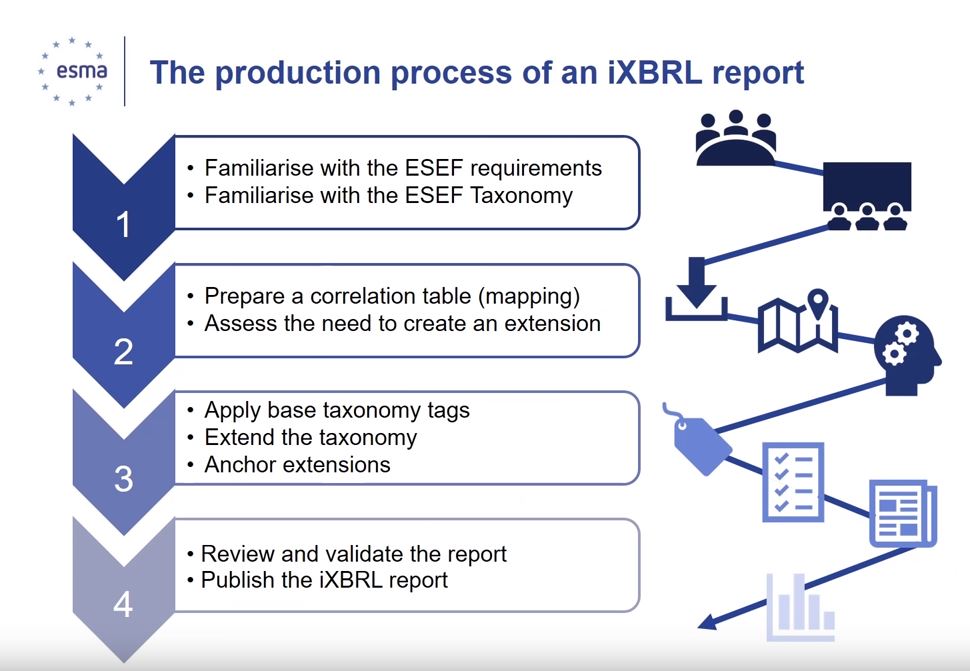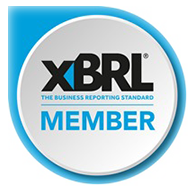ESEF Taxonomy – Second ESMA tutorial.
ESMA has upload a tutorial of the ESEF Taxonomy. This tutorial aims to give issuers osme keys for the preparation of the inline XBRL reports following ESEF requirements.
It contains 4 defined steps to track ESEF necessities; and it continues the first tutorial published by ESMA in November 2018.
The production process of an iXBRL report:
- Familiarise with ESEF requirements – ESEF Taxonomy:
- Prepare a correlation table – Extending the Taxonomy if necessary.
- Extend the Taxonomy – Anchor extensions.
- Review and validate the report – Publish the iXBRL report
Familiarise with ESEF requirements – ESEF Taxonomy:
The ESEF Taxonomy will be composed by two components:
- Core Taxonomy (Annex VI of the RTS):
- The list of all human readable labels.
- XBRL Taxonomy Files:
- RTS published on ESMA´s website.
- Core Taxonomy (Annex VI of the RTS):
ESEF Taxonomy is built very closely of the IFRS Taxonomy; which lists and defines specific elements to allow preparers to identify or tag the information of IFRS financial statements.
The IFRS Taxonomy elements proceed of two sources:
- IFRS Standards.
- Common reporting practice elements.
IFRS Taxonomy reflects the presentation and disclosure requirements of IFRS standards as issued by International Accounting Standard Board (including accompanying guidance and examples materials).
ESEF Taxonomy includes a limited number of ESMA technical addtions to the IFRS Taxonomy. (They are organized alphabetically, but they can be changed according to the IFRS).
Prepare a correlation table – Extending the Taxonomy if necessary.
This step means to map financial statements according to the ESEF Taxonomy.
Block tagging requirements: Furthermore, in 2.022 there will be text disclosures forced to tag aswell.
There will be tags that will be equal in IFRS and ESEF Taxonomy, but there will be another ones wich didn´t match exactly; so the issuer will chose the correct one from the ESEF list (because of the industry or the preparer).
Extend the Taxonomy – Anchor extensions.
Entity specific Taxonomy elements – Extensions allow issuers to tag information which are unique for a company without similar tagging in ESEF Taxonomy. This is thinked because of the flexibility of IFRS Taxonomy.
Review and validate the report – Publish the iXBRL report
During the report preparation, there will be checks and rules into the Taxonomy to validate it to ensure the file is correct, complete, accurate and consistent. But, software developers could implement more validations.
RTS on ESEF that not change the way issuers publish or disclose regulated information.





